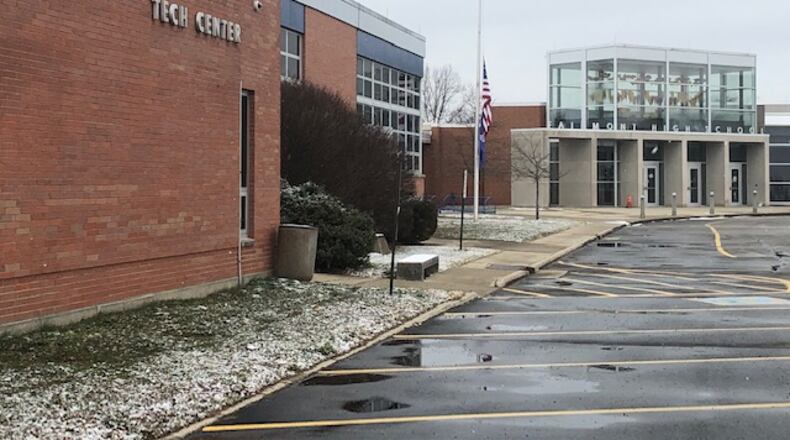The demand for some of those medical business jobs are expected to increase 19% or more, with the need for nurse practitioners to jump by more than half, according to the U.S. Bureau of Labor Statistics.
Credit: JIM NOELKER
Credit: JIM NOELKER
Kettering’s program will be designed to give students “a huge leg up” in gaining on-the job experience in an industry where jobs are going unfilled for long stretches, said Fairmont CTC Principal Liz Jensen.
Fairmont currently has an allied health program limited to 25 students. The new medical program will offer certification for state tested nursing assistants, which “are needed to do a lot of the work with patients in nursing homes and hospitals,” Jensen said.
“I have already had calls from several local hospitals (which) would like to get dibs on our students with the STNA credentials,” she added. “Very in demand.”
Jensen said she has been in contact with both Kettering Medical Center and Miami Valley Hospital about accepting STNA candidates and is working to finalize relationships.
A survey by Indeed.com found that nurse practitioners and agency nurses ranked third and fourth, respectively, on the list of medical jobs with the highest percentage of unfilled positions, according to the American Medical Certification Association.
“As the shortage of primary care physicians reaches an all-time high, the demand for NPs is growing as well,” the AMCA states. “Nearly 60% of all nurse practitioner job openings still need to be filled after 60 days.”
The new medical program is part of an $8.5 million expansion of Fairmont’s CTC program funded by a voter-approved bond issue, Jensen said.
The vast majority of the project’s construction was completed before this school year and features a new 25,000 square foot building housing Fairmont’s alternative school, construction and cosmetology classes, officials said.
Credit: JIM NOELKER
Credit: JIM NOELKER
The new medical program will be in a 2,600-square-foot site that formerly held construction classes, said Ken Lackey, Kettering business services director.
A $165,000 renovation of that area is scheduled to begin about Feb. 1 and be completed by May 1, he said.
By the 2021-22 school year, the nearly 28,000-combined-square-feet of space in both CTC sites will accommodate around 240 students, doubling the capacity to 50 for students in health-care related areas, Jensen said.
“We have consistently about 75 applicants every year for the 25 spots,” Jensen said. “So we knew we needed a second program to meet both student and industry needs.”
Fairmont’s allied health section’s focus will change being geared more for students earning college credit toward four-year medical degrees while the medical assistance program will focus on two-year degrees, she said.
With the STNA credentials earned as juniors, students in the new program can be interning at hospitals and nursing homes in their senior years.
“So becoming an STNA as a high school student is a huge leg up to begin your career in health care,” Jensen said.
JOB GROWTH
Occupations projected to have the most job growth between 2019 and 2029.
1-Home health and personal care aides.
2-Fast food and counter workers.
3-Cooks, restaurant workers.
4-Software developers and software quality assurance analysts and testers.
5-Registered nurses.
6-General and operations managers.
7-Medical assistants.
8-Medical and health services managers.
9-Market research analysts and marketing specialists.
10-Laborers and freight, stock, and material movers.
11-Landscaping and groundskeeping workers.
12-Nursing assistants.
13-Nurse practitioners.
14-Financial managers.
15-Janitors and cleaners, except maids and housekeeping cleaners.
Source: U.S. Bureau of Labor Statistics.
About the Author



